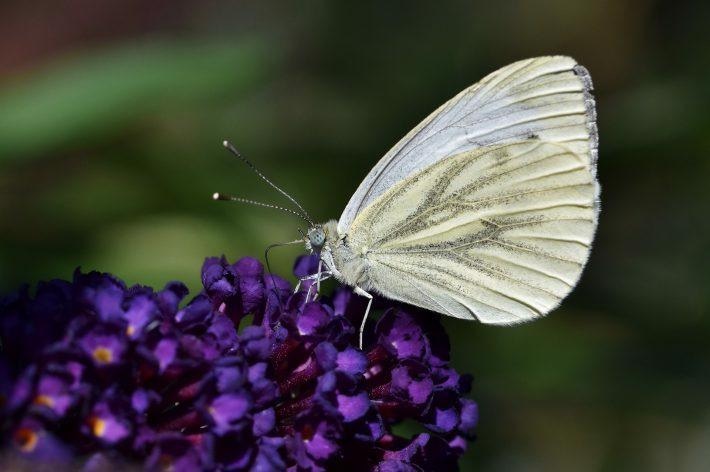According to new research, green-veined white butterflies are less likely to survive the winter and appear in the spring because of longer and warmer autumns. Functional Ecology, a publication of the British Ecological Society, has published the results.

Image Credit: British Ecological Society
Researchers from Stockholm University, the University of Oulu and Greifswald University explored the effects of climate change on butterflies in a recent study. Green-veined white butterflies, which are prevalent all through the UK and Europe, had their chrysalises subjected to simulated autumn conditions of different temperatures and lengths in laboratory studies.
The chrysalises subjected to warmer and longer fall circumstances lost more weight and used more energy than any of those subjected to milder conditions, according to the researchers. Even though the butterflies did not perish instantly under the higher temperatures, the scientists found that those that were exposed to them had a lower chance of surviving to adulthood the following spring.
Dr. Matthew Nielsen at the University of Oulu — who conducted the research at Stockholm University — said, “Climate change is making autumns warmer and last longer, and it was this specific combination of conditions that had the greatest impact on the butterflies in our study. We show that stressful conditions experienced at one time of year can have lasting negative consequences at other times of the year, linking changes in one season to consequences in others.”
Extreme heat makes animals more vulnerable to dormancy throughout the winter because it increases their metabolic rate, forcing them to run out of energy faster.
Even though dormant animals use less energy than active animals, they use more when it’s warmer, and they can’t eat to replace that lost energy. It is already established that warmer winters are worse for dormant animals than colder ones, and our findings show that warmer autumns are potentially even more dangerous.
Dr. Matthew Nielsen, University of Oulu
Due to the obvious hardship of winter dormancy, the spring generation of green-veined white butterflies in Sweden, where the study was done, is normally the smallest. The scientists warn that the higher mortality they observed following warmer and longer autumn conditions could have a significant impact on this species’ population at a vital time of year.
Our findings show that warmer autumns are potentially even more dangerous than warmer winters for dormant animals.
Dr. Matthew Nielsen, University of Oulu
The butterflies were exposed to temperatures as high as 25 °C for up to 16 weeks during the research. Even though these simulated autumn conditions appear extreme, the authors claim that these temperatures already occur in southern parts of the butterfly’s range (as far south as Spain) and could occur further north in the coming years under future climate change scenarios.
The scientists also claim that a hibernation period of 16 weeks before the beginning of winter conditions is not unrealistic for this butterfly species. Some individuals can become dormant up to two months earlier than others can, allowing them to produce another generation before the winter.
In the study, the researchers placed groups of 8 to 11 chrysalises in chambers kept at 15, 20 or 25 °C for 1 to 16 weeks to imitate various fall conditions in the laboratory. The 459 chrysalises were then put in the same winter conditions for 24 weeks.
The researchers examined how much weight the chrysalises shed and how much energy they needed throughout the simulated autumn circumstances. Ultimately, during a simulated spring, they tracked the butterflies’ survival until they perished or emerged as healthy adults.
There are some limitations to extending the results to wild populations since the research was conducted in the lab and was meant to investigate the limits of green-veined butterflies’ tolerance to greater temperatures. For example, rather than reflecting genuine seasonal and daily change, the simulated conditions remained constant. According to the researchers, these differences could exacerbate the metabolic expenditures of autumn weather.
The researchers now want to delve into the effects of a warming environment on butterflies in greater depth, as well as the effects of many seasons.
In our study, we only considered survival to adulthood, but there could be even more negative effects later in life, for example on the ability to find mates or the number of eggs laid. Studying how warming in autumn, winter, and spring interact will also be key to understanding the actual impacts of climate change on dormant animals.
Dr. Matthew Nielsen, University of Oulu
Journal Reference:
Nielsen, M. E., et al. (2022) Longer and warmer prewinter periods reduce post-winter fitness in a diapausing insect. Functional Ecology. doi.org/10.1111/1365-2435.14037.